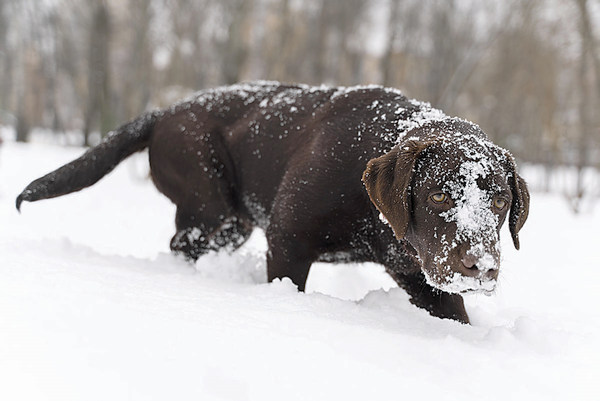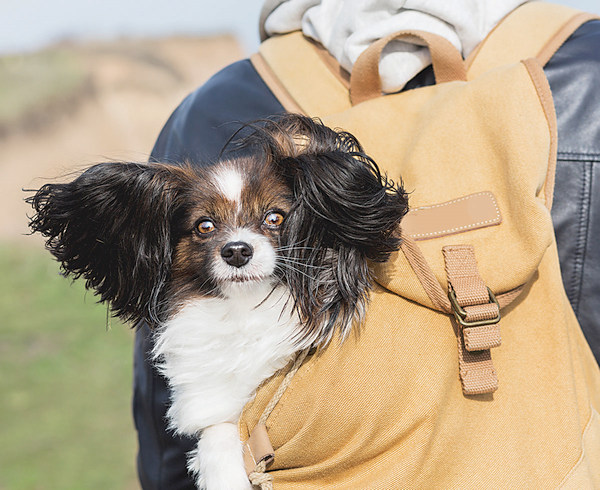By Shari King
With the hustle and bustle of the holidays behind us, we now embrace the quiet and serene days of winter. But for our pets and other animals, the cold can bring hazards and be quite dangerous, and for some animals, even life threatening.
Poisons
One of the most talked about and well know dangers for our pets in cold weather is antifreeze toxicity.

According to the Poison Control website, animals are attracted to antifreeze because of the sweet smell and taste. This chemical is absorbed very rapidly once ingested.
There is a narrow margin of safety when animals ingest these liquids, and even small amounts can lead to permanent damage to the kidneys. If a pet is suspected to have consumed antifreeze it is imperative that this pet be taken to a veterinarian immediately for treatment
Something not often mentioned is pet exposure to carbon monoxide, an odorless gas. Carbon monoxide is poisonous to both humans and animals. Fires, car exhaust, generators, unventilated furnaces, and gas water heaters can emit the gas.
It’s best to keep pets out of the garage, especially if your car has been running. If you think your pet has been exposed to carbon monoxide, head to your veterinarian so they can administer oxygen and other treatments. Your pet may need medical attention if they have trouble breathing, or seem weak or lethargic.
Consider placing carbon monoxide detectors throughout your home to keep your family and pets safe.
Another poison not mentioned enough is ice melts. Most ice melts contain large amounts of sodium salts.
Some types can cause damage to the paw pads when stepped on. These granules can get stuck in the paws and between the toes and cause redness, cracking, or chapping.
Ingestion of melts can cause mild to severe toxicity resulting in upset stomach, vomiting, and neurologic signs.
There are “pet-friendly” ice melts that may help to minimize the chance of an injury or toxicity. Also, rinsing your pet’s paws off when they come in from outside can be helpful.
During walks, your dog’s feet, legs and belly may pick up deicers, antifreeze, or other chemicals that could be toxic. Check your dog’s coat and paws frequently for signs of cold-weather injury or damage, such as cracked paw pads or bleeding.
You may be able to reduce the chance of ice and other skin irritants accumulating on your dog’s feet by having a groomer clip the hair between his toes.
Rodent poison is another potential hazard for our pets and other animals.
Mice and rats commonly come into homes more often in the winter to seek warmth. So, not surprisingly, rat poisons are used more during the colder months and can cause great risk for your pets.
There are different ingredients in the blocks or pellets, and many look the same or are the same color. Always keep packaging from rat poisons in the event your pet ingests it. This will help your Poison Control to quickly identify the toxin and be able determine the specific treatments.
Rat poisons can cause multiple symptoms depending on the ingredient in the bait (internal bleeding, brain swelling, and kidney failure). When using rodent poisons, place the bait in protective bait stations and try your best to keep in areas where your pet cannot go.
Mice aren’t the only animals that seek warmth in the winter. Stray and feral cats will often rest on the hoods of warm cars and will even climb up under the hood and put themselves in grave danger should the motor be started while the animal is hiding under there.
A good rule of thumb is to thump the hood of your car before getting in or a quick horn tap before starting. Post a note on your dash to help to remind you to prevent this tragedy from occurring. A warm vehicle engine can be an appealing heat source for outdoor and feral cats, but it’s deadly.
Fires
Fires occur more often during winter months and puts our indoor pets at risk.

Space heaters cause more than 25,000 house fires every year according to the US Consumer Product Safety Commission. Space heaters run on electricity, propane, natural gas, or kerosene.
When investing in a small space heater know that the newer models have updated safety features. Select heaters that have the Underwriter’s Laboratory label, which means the product has been tested, inspected, and certified.
If you have a permanent combustion space heater, make sure a professional inspects the ventilation every year. Space heaters should be kept on a level surface, up and away from where people and pets walk.
If you have a fireplace, be sure to cover it with a sturdy screen your pet can’t knock over.
Cold weather also brings the risks of power outages. Prepare an emergency kit, and include your pet in your plans. Have enough food, water, and medicine to last for at least 5 days.
Exposure
Cats and dogs should be kept inside during cold weather.

It’s a common belief that dogs and cats are more resistant than people to the effects of cold weather because of their fur, but that belief is false.
Like people, cats and dogs are susceptible to frostbite and hypothermia. Some thick-coated dog breeds like huskies and Saint Bernards are bred for colder climates and are more tolerant of cold weather. However, no pet should be left outside for long periods in below-freezing weather.
If you are unable to keep your dog inside, provide him with a warm, solid shelter against the wind. Make sure that they have access to fresh, non-frozen water.
The floor of the shelter should be off of the ground, and the bedding should be thick and dry. The door to the shelter should be positioned away from prevailing winds.
Super-easy cat shelters can be constructed from large plastic totes. Cut a 10-inch hole on the short side, 4 inches from the bottom and fill it with straw. Place in a sheltered area turned away from the wind.

Heated pet mats can be used but should be used with caution because they are capable of causing burns.
A dog or cat’s cold tolerance can vary from pet to pet based on their coat, body fat stores, activity level, and health.
Be aware of your own pet’s tolerance. You will probably need to shorten your dog’s walks in very cold weather to protect him from weather-associated health risks.
Arthritic and elderly pets may have more difficulty walking on snow and ice and may be more prone to slipping and falling.
Short-haired pets feel the cold faster because they have less body protection, and short-legged pets may become cold quicker because their bellies and bodies are more likely to come into contact with snow-covered ground.
Pets with chronic diseases like diabetes, heart disease, kidney disease, or hormonal imbalances may have a harder time regulating their body temperature and can be affected from temperature extremes.
If your dog has a short coat or seems bothered by the cold weather and is reluctant to go outside, consider a sweater or dog coat. Be sure to hang it upon your return so you have a dry sweater or coat each time your dog goes outside. Wet coats can actually make your dog colder.
You can make a sweatshirt for a small dog with a pair of scissors and an old sweatshirt. Cut the sleeve off at the elbow and then two holes for the dog’s front arms. Modify the length so the underneath ends at the belly and doesn’t interfere with urination or walking.
When walking your dog, stay away from frozen ponds, lakes, and other water hazards. You never know if the ice will support your dog’s weight, and if your dog breaks through the ice, it could be deadly.
Taking walks each day is a good thing for you and your pet, but try to find iceless paths and trails. If you have to walk around water, keep your dog in control on a short lead.
Pets can become lost in winter because snow and ice can hide recognizable scents that might normally help your pet find his way home. Make sure your pet has a well-fitting collar with up-to-date identification and contact information.
A microchip is a more certain and permanent means of identification, but you must keep the registration and your contact info up to date.

If your pet is whining, shivering, seems anxious, slows down or stops moving, or seems weak, get them back inside quickly because they may be showing signs of hypothermia.
Frostbite is harder to detect, and may not be fully recognized until a few days after the damage is done. If you suspect your pet has hypothermia or frostbite, consult your veterinarian immediately.
Feed your pet well throughout the winter. Feed a high-quality pet food without empty calories and fillers to ensure that their energy needs are being met. Watch your pet’s body condition and keep them in the healthy range.
Outdoor pets require more calories in the winter to generate enough body heat and energy to help keep them warm.
Every season has its dangers, and it’s up to us to protect our pets as best we can. Being mindful and learning is always our best defense to keep them safe.
So, remember when Jack Frost is nipping at your nose, he’s nipping at our pets too!

